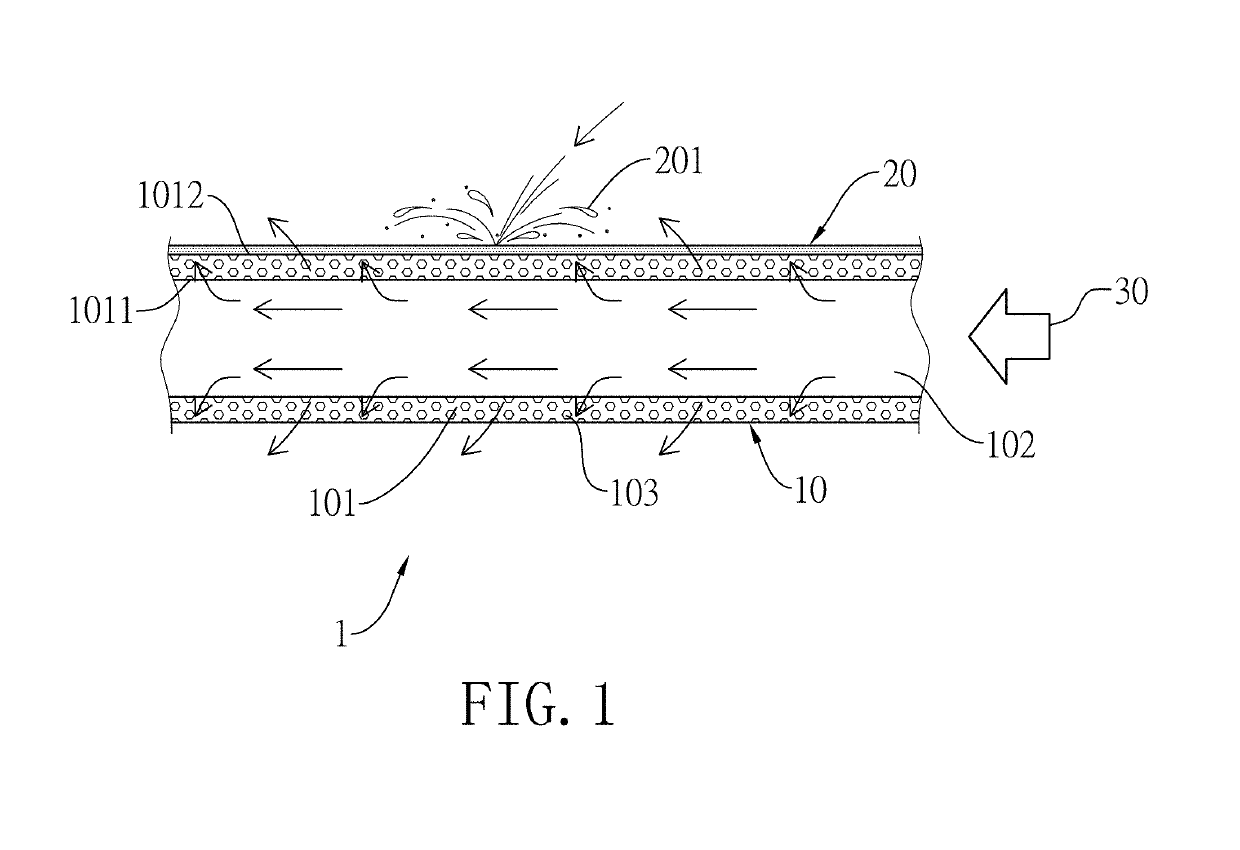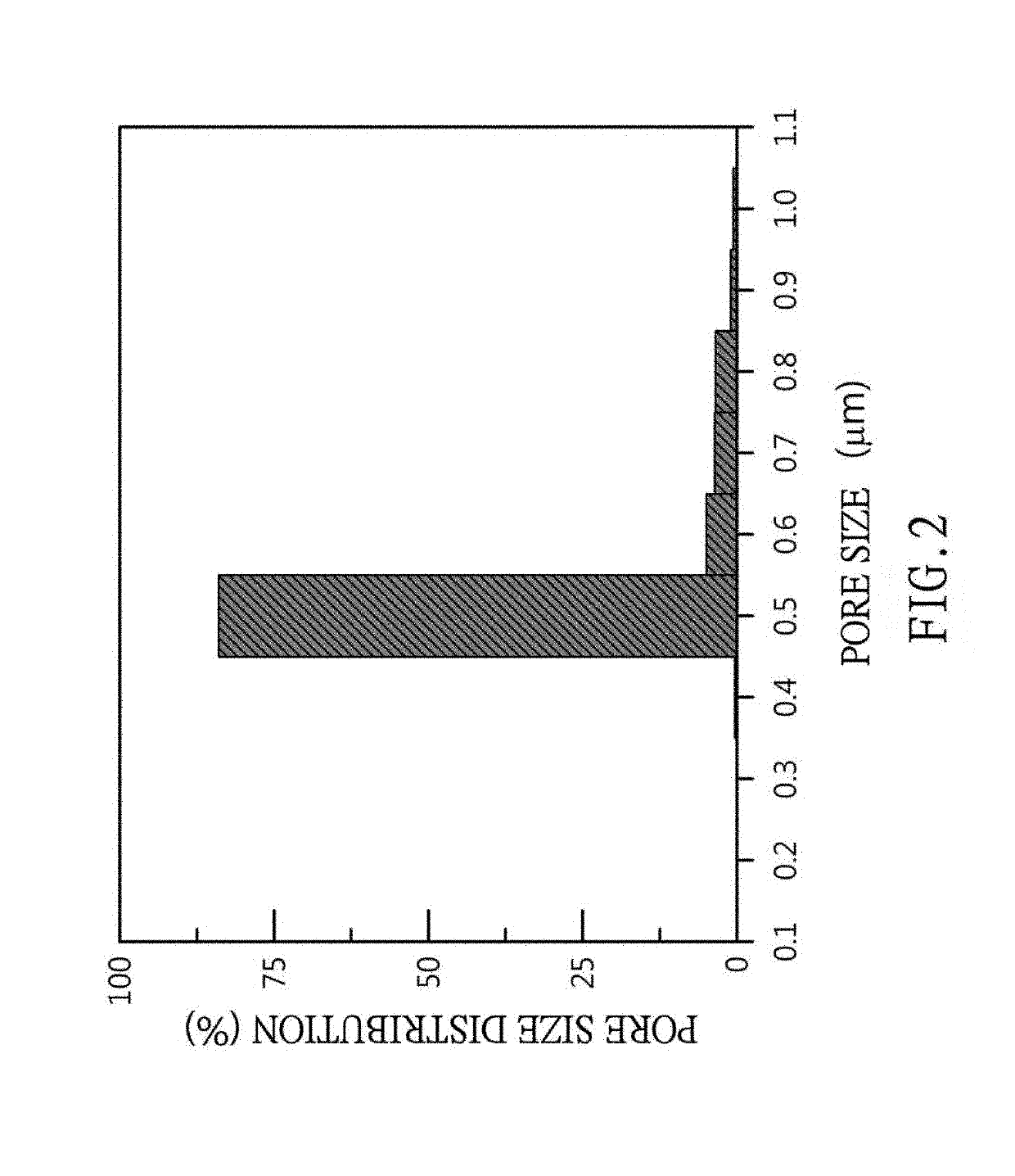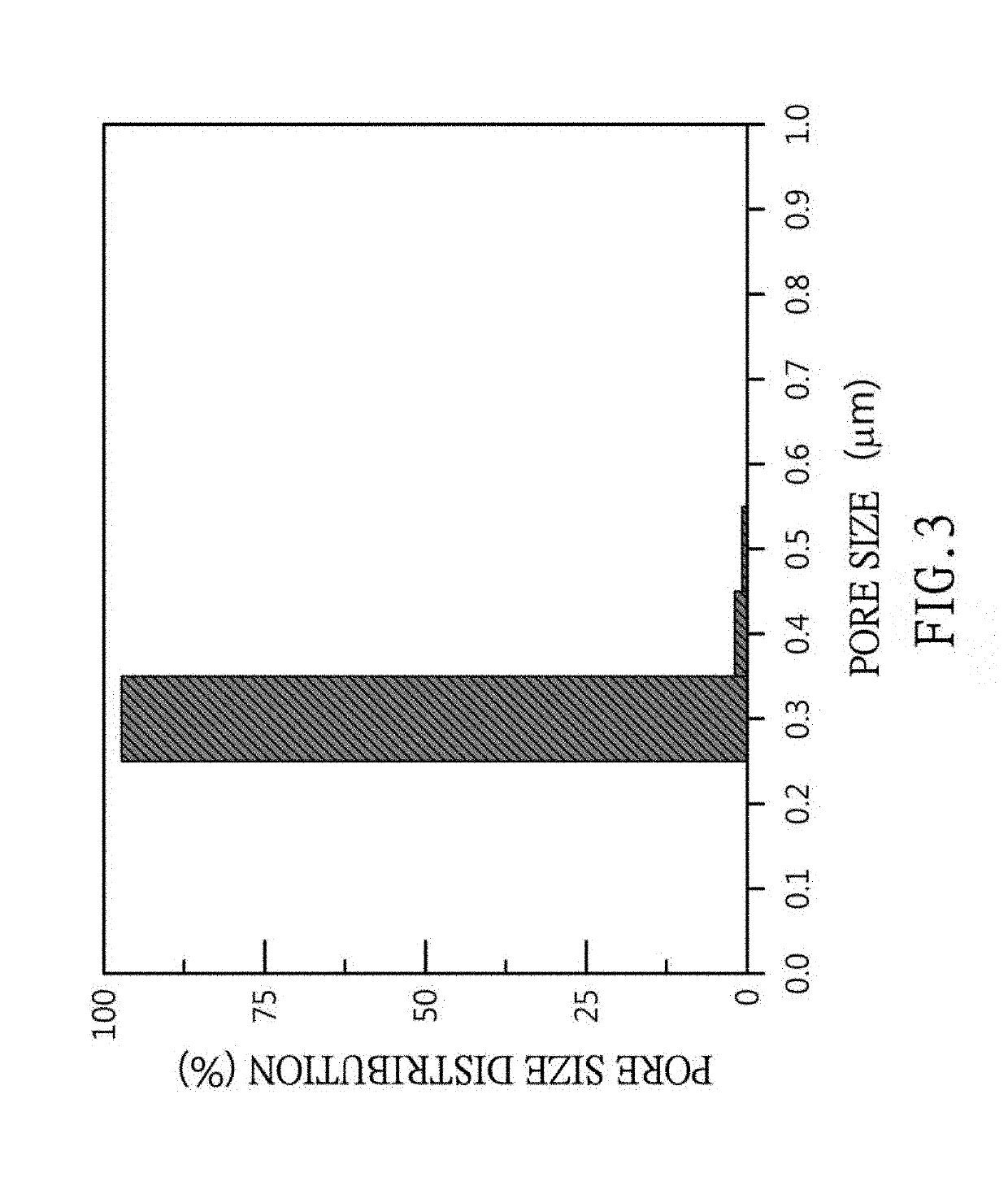Preparation method for composite porous structure and composite porous structure made thereby
a composite porous structure and composite porous technology, applied in membrane technology, membranes, coatings, etc., can solve the problems of environmental pollution, not meeting current environmental protection demands, long preparation time and increased cost, etc., and achieves simple and economic methods. , the effect of more potential for commercial practi
- Summary
- Abstract
- Description
- Claims
- Application Information
AI Technical Summary
Benefits of technology
Problems solved by technology
Method used
Image
Examples
example 1
[0041]First, referring now to FIG. 1, a hollow tubular porous substrate 10 in the step (a1) is prepared. The porous substrate 10 has a tube wall 101, an axial channel 102 and multiple pores 103. The axial channel 102 is formed in the tube wall 101, and the pores 103 are concavely formed on the tube wall 101. The tube wall 101 has a first surface 1011 (i.e., an inner wall surface) and a second surface 1012 (i.e., an outer wall surface) opposite to the first surface 1011. The tube wall 101 has a thickness of 2.5 mm, a length of 300 mm, an inner diameter of 29.5 mm and an outer diameter of 30 mm. The porous substrate 10 is made of stainless steel and has an average diameter of 3 μm. Subsequently, in the step (a2), the porous substrate 10 is immersed in a tank filled with deionized water to allow the multiple pores 103 in the porous substrate 10 to be full with deionized water.
[0042]Next, referring to FIG. 1, the cooling fluid 30 at 25° C. is fed into the axial channel 102 at a flow rat...
example 2
[0045]The preparation method of Example 2 is similar to the preparation method of Example 1, the difference lies in that Example 2 repeats step (b) 5 times. The composite porous structure prepared in accordance with the preparation method of Example 2 comprises a porous substrate and a coating layer having multiple micropores formed on the second surface of the porous substrate. The average thickness of the coating layer is 48 μm and the average pore diameter of the micropores in the coating layer is about 0.32 μm. The pore size distribution thereof is shown in FIG. 3, wherein the micropores having pore diameters larger than 0.35 μm take up only 2.7% of the total micropores. In addition, the composite porous structure in accordance with the example has a blocking efficiency of 99% for the 0.2 μm polystyrene standard particles
PUM
| Property | Measurement | Unit |
|---|---|---|
| temperature | aaaaa | aaaaa |
| temperature | aaaaa | aaaaa |
| temperature | aaaaa | aaaaa |
Abstract
Description
Claims
Application Information
 Login to View More
Login to View More - R&D
- Intellectual Property
- Life Sciences
- Materials
- Tech Scout
- Unparalleled Data Quality
- Higher Quality Content
- 60% Fewer Hallucinations
Browse by: Latest US Patents, China's latest patents, Technical Efficacy Thesaurus, Application Domain, Technology Topic, Popular Technical Reports.
© 2025 PatSnap. All rights reserved.Legal|Privacy policy|Modern Slavery Act Transparency Statement|Sitemap|About US| Contact US: help@patsnap.com



